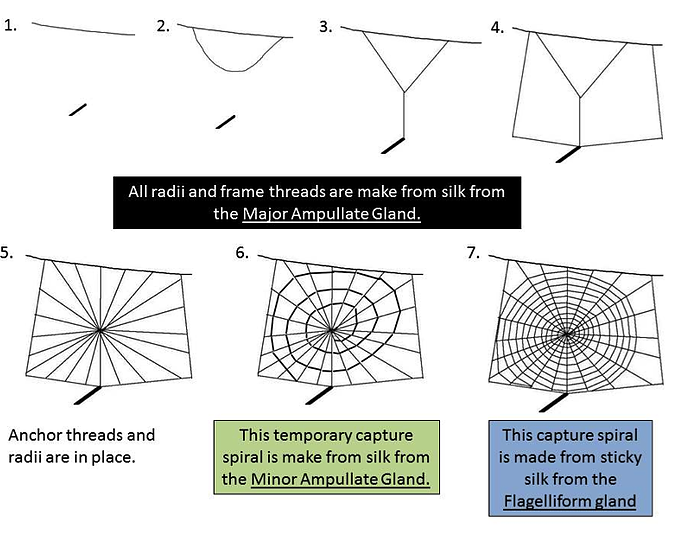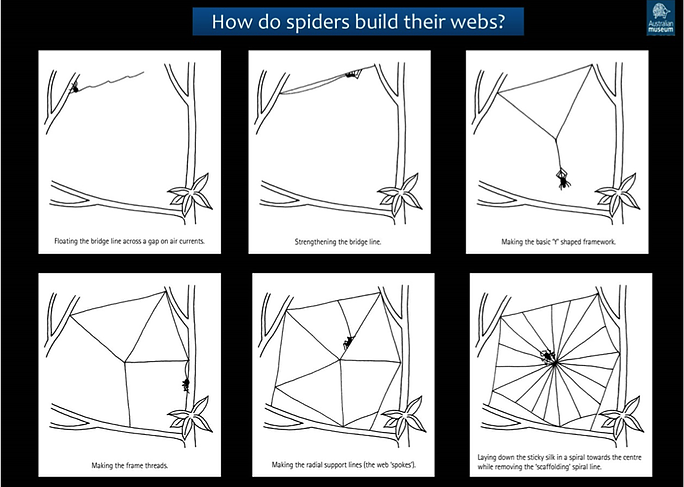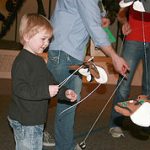Weave a Web
GOAL: This station invites participants to think about how orb-weaving spiders go about building their web and how web structure and use of silk from specific glands might facilitate prey capture.
BACKGROUND: Not all spiders construct webs, but they all use silk in one way or another (e.g. dispersal, nest lining/construction, diving bell construction, guide lines, cocoons, etc.). Spiders can have up to seven different types of silk glands (Major Ampullate gland, Minor Ampullate gland, Flagelliform gland, Aciniform gland, Tubuliform gland, Pyriform gland, and Aggregate gland), each of which produces silk or glue with distinct properties (see graphic of spider silk gland anatomy below).
Orb-weaving spiders are hypothesized to share a common ancestor (i.e. the orb web is monophyletic), with an ancestral orb web consisting of a horizontal orb constructed out of cribellate silk. The evolution of flagelliform silk (core silk produced by flagelliform glands coated with sticky droplets produced by aggregate glands), along with a vertical web orientation, is suggested to be a key innovation in the diversification of the Araneoid spiders. An orb web consists of bridge, anchor, and frame threads; a non-sticky radius, an auxiliary spiral, and a capture spiral.
Orb-weavers use four distinct types of silk to construct an orb web. The anchor and frame threads are produced by the Major Ampullate glands. This silk has high tensile strength and absorbs kinetic energy well. The temporary capture spider, or auxillary spiral, is produced by the Minor Ampullate glands. This silk is highly elastic. The core silk for the capture spiral is produced by the flagelliform glands and coated with sticky droplets produced by the aggregate glands. Finally, the pyriform glands produce a type of glue that is used to attach silk strands together during web construction.
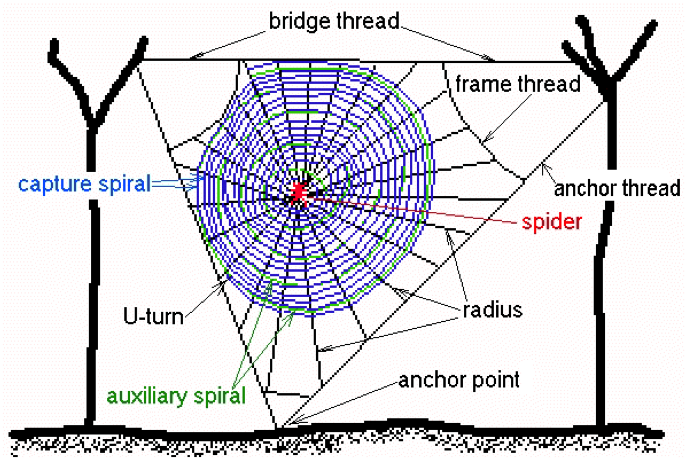
PROCEDURE:
- On the tabletop, make available numerous diagrams depicting how orb-weaving spiders construct their webs.
- Ask participants to think about how they might get their first strand of silk from one tree to another.
- Invite them to use different colored yarn to represent the different types of silk that an orb-weaving spider uses in constructing their web.
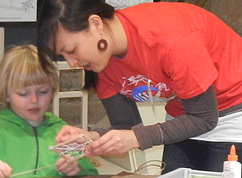
MATERIALS:
-
Sheets of plastic canvas
-
Plastic children’s sewing needles
-
Black yarn
-
Green yarn
-
Blue yarn
-
How spiders build a web handout (download here)


